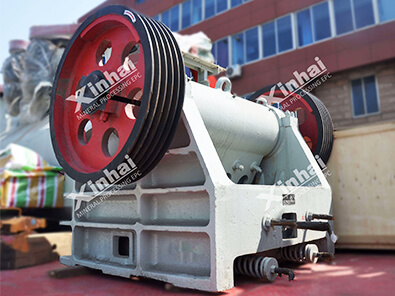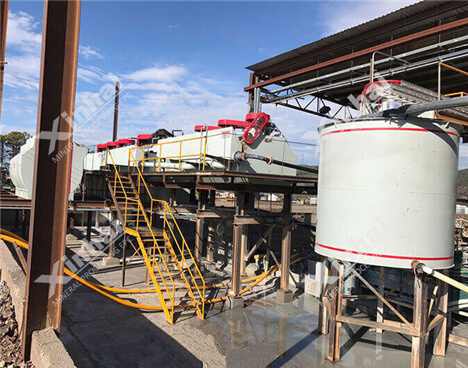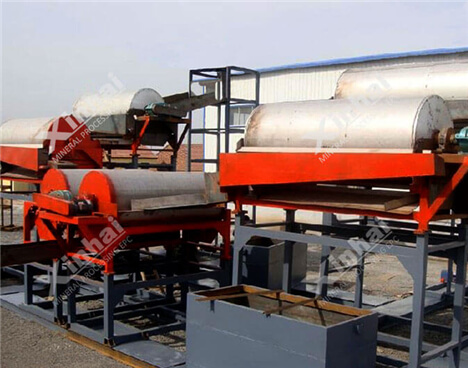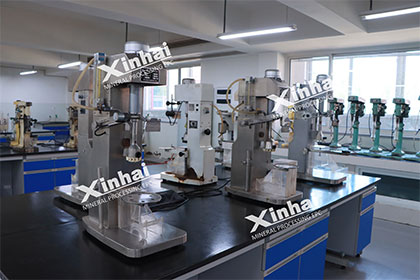Introduction: What is Kaolin Processing and How Does It Work?
 Chileen Gao
Chileen Gao
 Jan 12, 2023
Jan 12, 2023
 1823
1823
If you want to know more details about equipment, solutions, etc, please click the button below for free consultation, or leave your requirements!
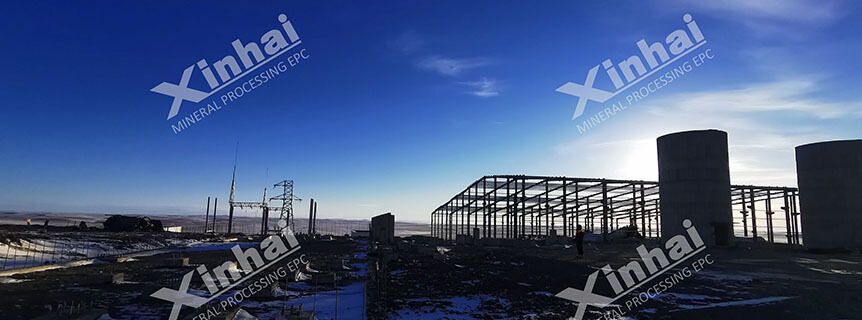
(kaolin processing plant)
Kaolin is an important non-metallic mineral resource with abundant domestic reserves. After beneficiation and processing, kaolin can realize its application value and is widely used in ceramics, paper making, rubber, refractory materials, chemical industry and so on. This article introduces the properties, applications and processing methods of kaolin in detail, which will hopefully give you a more detailed understanding of kaolin.
01Brief Introduction to Koalin
Back
The kaolinite group of minerals includes many types, such as kaolinite, gekaiite, perlite and erosite. They are similar in chemical composition, differing only slightly in the way the unit tectonic layers are stacked and in the amount of water between the layers.
Raw kaolinite or kaolinite generally contains both clay minerals and non-clay minerals. The clay minerals are mainly the kaolinite group minerals, followed by hydromica, montmorillonite and chlorite. Non-clay minerals are mainly quartz, feldspar and mica, as well as aluminium oxides and hydroxides, iron minerals (limonite, magnetite, hematite and rhodochrosite), iron oxides (ilmenite, rutile, etc.), organic matter (plant fibres, organic peat and coal), etc.
Pure kaolin has high whiteness, soft texture, easy to disperse and suspend in water, good plasticity and high adhesion, excellent electrical insulation properties, good acid resistance and high refractoriness.
02Classification of Kaolin
Back
Naturally produced kaolin ores can be classified into three industrial types: hard kaolin (soil), soft kaolin and sandy kaolin, according to their genesis, quality, plasticity and sandy (quartz, feldspar, mica and other minerals with particle size >50μm) content.
03Application of Kaolin
BackKaolin has special properties such as plasticity, adhesiveness, certain drying strength, sinterability and whiteness after firing, which makes it the main raw material for ceramic production; the excellent process properties such as whiteness, softness, high dispersibility, adsorption and chemical stability make it widely used in paper industry.
In addition, kaolin and calcined kaolin are also widely used in rubber, plastics, coatings, chemicals, petroleum refining, building materials, refractory materials, pesticides, aerospace and other fields.
The application areas of kaolin differ and so do their quality requirements.
In terms of chemical composition, paper coatings, radio porcelain, refractory crucibles, petrochemical carriers etc. require kaolin clay with a content of Al2O3 and SiO2 close to the theoretical value of kaolinite; daily ceramics, building and sanitary ceramics, white cement, rubber and plastic fillers etc. require a lower Al2O3 content of kaolin clay and a slightly higher SiO2 content. Cable fillers not only require high purity of kaolin, but also have high requirements on its volume resistivity. For Fe2O3, TiO2, SO3 and other harmful components, there are also different content requirements; the permissible values of CaO, MgO, K2O and Na2O content vary from application to application.
In terms of physical properties, the focus of the requirements for each application is more obvious. Paper coatings or pigments mainly require high whiteness, low viscosity and fine particle size; the ceramic industry requires good plasticity, moulding properties and firing whiteness; refractory materials require high refractoriness, the enamel industry requires good suspension, etc.
04Processing of Kaolin
BackDue to the varying degrees of presence of quartz, feldspar and mica as well as aluminium oxides and hydroxides, iron minerals (limonite, pyrite, magnetite, hematite and rhodochrosite etc.), titanium oxides (ilmenite, rutile etc.) and organic matter (plant fibres, organic peat and coal) impurities are present in the raw kaolin ore. In demanding applications it must be beneficiated and purified.
The beneficiation method for kaolin depends on the type of impurities or co-/associated minerals to be removed from the raw ore, the state of deposit, the size of the embedding and the required physical and chemical specifications of the product.
For kaolin with low impurity content, high whiteness, low iron content and mainly sandy impurities (quartz, feldspar, etc.), a simple drying, crushing and then air separation classification method can be used to remove them (i.e. dry separation).
For kaolin with high impurity content, low whiteness, sandy minerals and iron minerals, it is generally necessary to disperse the slurry and then use methods such as gravity separation(sand removal), strong magnetic separator or high gradient magnetic separator and superconducting magnetic separator, chemical bleaching and flotation; for kaolin with high organic content, in addition to the aforementioned methods, it is also necessary to use methods such as sieving and calcining after slurrying. The kaolin processing process depends on the type of ore.
Soft Kaolin and Hard Kaolin
Soft kaolin and sandy kaolin are generally separated by a wet separation process. The process is as follows: stockpiling or mixing of raw ore → pulp making → removal of plant mineral fibres → classification and sand removal → magnetic separation → bleaching → filter press and dewatering→ drying.
The raw ore or stockpiled blended ore is slurry prepared in a mixer or pounder by adding water and dispersing agent at a set concentration. The purpose of the slurry preparation is to disperse the kaolin and separate it from the sandy minerals and vegetable fibres in order to prepare a slurry of the right consistency for the subsequent desliming and desanding operations.
The prepared slurry is removed from the vegetable fibres and coarse sand by means of a vibrating screen, followed by the removal of fine sand by means of a hydrocyclone unit, centrifugal concentrator or horizontal spiral discharge settling centrifugal classifier.
If the product after sand removal meets the requirements of a particular field of application, a flocculant (e.g. alum) can be added to make it coagulate and then filter pressed and dried.
To obtain a good quality or high quality kaolin, in most cases a strong or high gradient magnetic separator, chemical bleaching or even flotation and selective flocculation are also required.
At present the industry mainly uses strong magnetic separators or high gradient magnetic separators for magnetic separation and chemical bleaching. The staining mineral impurities in kaolin (e.g. limonite, hematite, rhodochrosite, anatase, rutile, etc.) are all weakly magnetic, therefore, the kaolin after sand removal can be further magnetised with a strong magnetic separator.
As most of the iron and titanium minerals in kaolin are finely embedded, the removal rate is often not high in general strong magnetic separation, so currently most of the industry uses high gradient magnetic separators for magnetic separation. In addition, superconducting magnetic separators with better performance (greater magnetic field strength and higher removal rate) have also been used for magnetic separation of kaolin. Superconducting magnetic separators not only have a further increase in magnetic field strength, which results in higher quality kaolin, but also have low energy consumption.
If the whiteness of the kaolin after magnetic separation still does not meet the requirements of high quality kaolin, chemical bleaching is generally used again. The chemical bleaching process of kaolin is to adjust the pH value to 4-4.5 with sulphuric acid in a stirring tank, then give it to the bleaching reaction tank, add the reducing agent sodium dioxide sulphite, sodium thiosulphate or zinc sulphite (Na2S2O4 or ZnS2O4) to reduce the trivalent iron in kaolin to divalent iron and dissolve it in the slurry, then wash it with water to separate it from kaolin.
Hard kaolin
For hard kaolin of high purity and good whiteness, it is generally possible to crush the raw ore directly and to grind and classify it according to the requirements for fineness of product for the application.
Ores containing small amounts of sand can be subjected to dry and wet sorting after crushing to an appropriate fineness; ores with a high content of iron impurities can be subjected to magnetic separation. If the iron-bearing minerals have a coarse embedded size, they can be subjected to dry strong magnetic separation after coarse crushing (<200 mesh).
However, if the iron is finely embedded in the particle size, a wet strong magnetic separator or a high gradient magnetic separator is used after fine grinding. If the requirements for a good quality kaolin product are still not met after magnetic separation, chemical bleaching can also be used again. The chemical bleaching process is similar to the aforementioned soft kaolin.
At present, the common crushing and screening equipment for hard kaolin or koalin is jaw crusher, vibrating screen, etc.; the grinding equipment is mainly ball mill, etc.; the dry grading and sand removal equipment is mainly grading (selection) machine, the wet grading equipment is mainly cyclone and centrifugal concentrator; the dry magnetic separation equipment is mainly magnetic separator, the wet magnetic separation equipment is the same as the aforementioned soft kaolin.
05Kaolin Ore Dressing Equipment
Back
Crusher
The jaw crusher is a crushing equipment with high production capacity, large crushing ratio and high crushing efficiency, mainly used for coarse crushing. The machine has a deep cavity optimized design for the crushing cavity of the traditional jaw crusher. The optimized design of the cavity provides high crushing effect; the high speed of the movable jaw and the curved jaw plate design provide high production capacity.
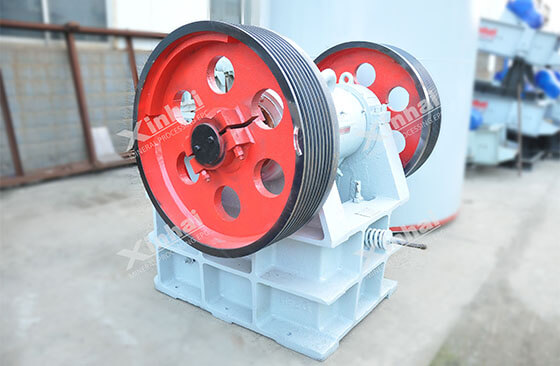
(crusher for kaolin processing)
Ball Mill
The ball mill jacking device adopts Xinhai's independently developed hydraulic jacking device. When the ball mill is being repaired, the hydraulic jack can be lifted up and down by simply manipulating the handle of the hydraulic station, and the lifting height can reach 400mm, which is simpler and more convenient to operate than ordinary jacking devices, and the cost of use and maintenance is lower.
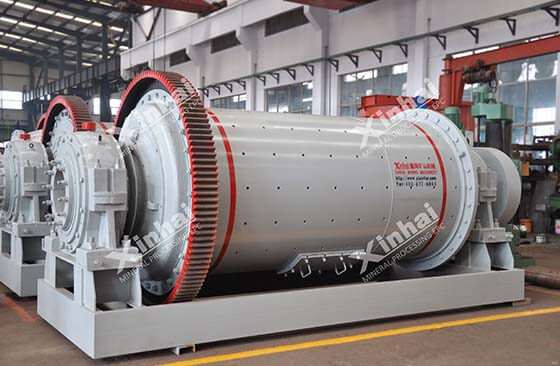
(ball mill for kaolin processing)
Hydrocyclone
This is an involute direction feed hydrocyclone, this involute feed opening is conducive to increasing the centrifugal force of the material, improving the classification effect and greatly reducing the wear and tear of the feed box.
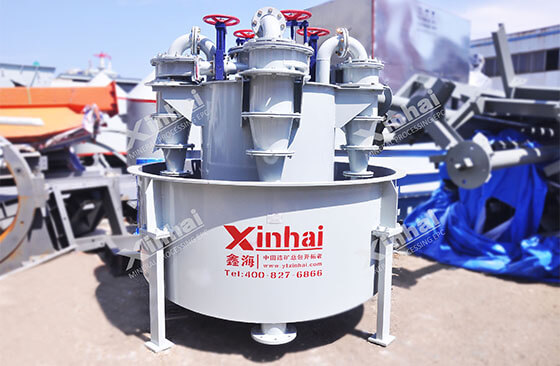
(hydrocyclone for kaolin processing)
Magnetic Separator
The dry magnetic separator magnet adopts 360° magnetic envelope angle design, the magnetic system all adopts high magnetic energy product, high coercivity NdFeB magnets, high magnetic field strength, large depth of action, magnetic field strength 8 years demagnetization rate does not exceed 5%.
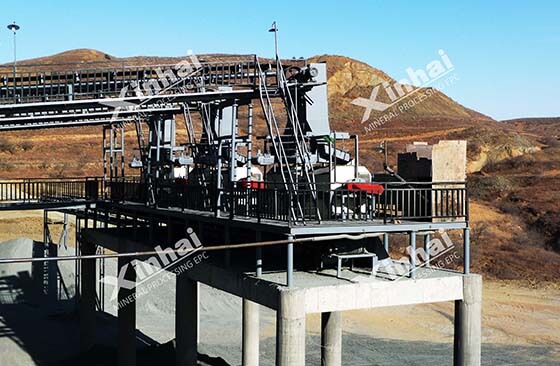
(hydrocyclone for kaolin processing)
06Summary
BackIt is difficult to obtain a high grade kaolin product by a single process alone. Therefore, in actual production, beneficiation tests can be carried out first and a combination of processes can be used to improve the quality of kaolin products. Welcome to click the chat button for more information about kaolin processing.
 +86 182 3440 3483
+86 182 3440 3483 yanzhang19990421@gmail.com
yanzhang19990421@gmail.com




 Message
Message Chat Now
Chat Now


